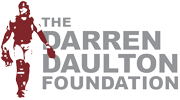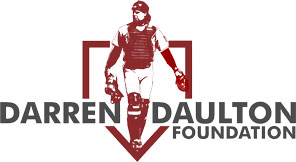Understanding Brain Cancer Targeted Therapy
When someone is diagnosed with brain cancer, doctors have several ways to fight the disease. Besides surgery and radiation therapy, another important approach is brain cancer targeted therapy.
This article will focus solely on this type of treatment, explaining what it is, how it works, the targeted therapy drugs used for brain tumors, and some of the potential common side effects, all in simple language for everyone to understand.
What is Targeted Therapy for Brain Cancer?
Traditional chemotherapy drugs work by attacking all rapidly dividing cells grow and divide in the body, including cancer cells and some healthy cells. This is why chemotherapy can have significant common side effects.
Targeted therapy for brain, on the other hand, is a newer type of treatment that is designed to specifically target certain features of cancer cells. Think of it like a smart bomb that aims only at the enemy without harming the innocent bystanders.
These “targets” are usually specific molecules, like proteins, that help tumor cells grow, divide, and spread of cancer cells. By blocking these targets, targeted therapy drugs can stop or slow down the growth of the cancer while doing less damage to healthy cells.
For types of brain tumors, targeted therapy offers a more precise way to destroy cancer cells and potentially improve outcomes while reducing some of the harsh common side effects associated with standard treatment like chemotherapy.
How Does Targeted Therapy Work?
Targeted therapy drugs work in different ways depending on the specific target they are designed to attack. Some common ways they work include:
- Blocking signals that tell cancer cells to grow and divide: Cancer cells often have abnormal signals that constantly tell them to multiply. Some targeted therapy drugs can block these signals, preventing the tumor cells from growing.
- Stopping the growth of new blood vessels that feed tumors: Tumors need nutrients and oxygen to grow, which they get from blood vessels. Some targeted therapies can prevent the formation of new blood vessels, cutting off the tumor’s supply line. This is particularly relevant as the vascular endothelial growth factor (VEGF) plays a crucial role in this process.
- Triggering the cancer cells to self-destruct: Some targeted drugs can activate processes within the cancer cells that lead to their death.
- Helping the body’s immune system attack cancer cells: While technically some immunotherapies are also targeted, in the context of “targeted therapy” we often refer to drugs that directly act on specific molecules within the cancer cell or its environment.
Types of Targeted Therapy Drugs for Brain Tumors
The specific targeted therapy drugs used for therapy for brain cancer depend on the type of cancer and the specific molecular changes found in the tumor cells. Some examples of targeted therapies used for certain types of brain tumors include:
- VEGF inhibitors: These drugs target the vascular endothelial growth factor (VEGF), a protein that promotes the growth of new blood vessels. Bevacizumab (Avastin) is a monoclonal antibody that targets VEGF and is used to treat certain aggressive brain tumors like glioblastoma. By blocking VEGF, bevacizumab can slow down the growth of the tumor by reducing its blood supply.
- EGFR inhibitors: The epidermal growth factor receptor (EGFR) is a protein found on the surface of many cancer cells that helps them grow. Drugs that inhibit EGFR, like erlotinib and gefitinib, are sometimes used for certain brain tumors that have an overactive EGFR.
- mTOR inhibitors: The mTOR pathway is involved in cell growth and metabolism. Everolimus is an mTOR inhibitor used to treat subependymal giant cell astrocytomas (SEGAs), a type of benign brain tumor that can occur in people with tuberous sclerosis. It works by blocking the mTOR protein, which helps to shrink the tumor.
- BRAF inhibitors: The BRAF protein is involved in cell signaling. In some types of brain tumors, the BRAF gene can be mutated, leading to uncontrolled cell growth. BRAF inhibitors, like dabrafenib and vemurafenib, can be used in these specific cases to block the activity of the mutated BRAF protein. Often, they are used in combination with MEK inhibitors.
It’s important to note that the field of therapies for brain tumors is constantly evolving, and new targeted therapy drugs are being developed and tested in clinical trials. Genetic testing of the tumor cells plays a crucial role in identifying which specific targets are present and therefore which targeted therapies might be effective.
Common Side Effects of Targeted Therapy
While targeted therapy is often associated with fewer common side effects than traditional chemotherapy, it’s not entirely without them. Because these drugs specifically target certain molecules, the side effects are often related to the normal functions of those molecules in healthy cells as well.
The common side effects of targeted therapy drugs can vary depending on the specific drug being used but may include:
- Skin problems: Rash, itching, dry skin, and changes in hair or nails are common with some targeted therapies.
- High blood pressure: Some VEGF inhibitors can cause an increase in blood pressure.
- Fatigue: Feeling tired is a common side effect with many cancer treatments, including targeted therapy.
- Diarrhea: Changes in bowel habits can occur.
- Liver problems: Some targeted drugs can affect liver function.
- Swelling: Fluid retention can sometimes occur.
It’s crucial to discuss potential common side effects with your doctor before starting targeted therapy. They can provide information on what to expect and how to manage any side effects that may arise. Often, these side effects are manageable and less severe than those associated with traditional chemotherapy.
Tumor Treating Fields (TTF)
While not a drug, tumor treating fields (TTF) is another type of therapy that specifically target cancer cells. TTF uses electric fields to disrupt the ability of cancer cells to divide. It involves wearing electrodes on the scalp that create these fields. TTF is often used in combination with other treatments for certain types of brain tumors, like glioblastoma.
The Future of Targeted Therapy for Brain Cancer
Targeted therapy for brain is a rapidly advancing field. As scientists learn more about the specific molecular changes that drive the growth of different types of brain tumors, they are developing new and more effective targeted therapy drugs.
Clinical trials are continuously exploring the potential of these new therapies for brain tumors, either alone or in combination with other treatments. The goal is to develop treatments that are more precise, more effective, and have fewer common side effects, ultimately improving the lives of people living with brain cancer.
Brain cancer targeted therapy represents a significant advancement in the treatment of types of brain tumors. By specifically targeting molecules involved in cancer cell growth and survival, these targeted therapy drugs offer a more precise approach to destroy cancer cells and slow the spread of cancer cells, often with fewer common side effects than traditional chemotherapy.
As research continues, targeted therapy holds great promise for improving outcomes for individuals facing a brain cancer diagnosis.
Support the Darren Daulton Foundation:
Learn how you can make a difference by visiting our Donate page.
If you’d like to contribute your time and skills, please visit our Volunteer page.
For those in need of financial assistance during their cancer journey, you can find more information on our Financial Assistance page.



